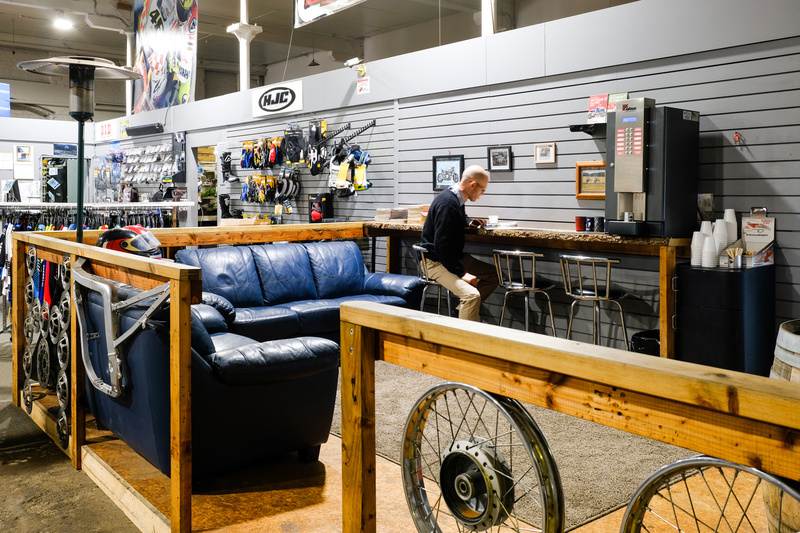Discover Top Quality Moto Parts NZ for All Your Motorcycle Demands
Discover Top Quality Moto Parts NZ for All Your Motorcycle Demands
Blog Article
Grasping Motorcycle Gears: Just How to Enhance Your Riding Experience
In the realm of motorcycling, mastering the art of equipment control is essential for boosting your riding performance. Properly recognizing and utilizing motorcycle equipments can considerably influence velocity, control, and gas effectiveness, changing an average experience into a smooth, exciting trip. By incorporating exact shift timing and adjusting equipment choice to numerous road conditions, cyclists can make sure optimal engine performance and safety and security. The nuances of clutch control, throttle sychronisation, and equipment mechanics beckon a much deeper exploration, guaranteeing to open the complete potential of your maker. Just how can these techniques be taken advantage of to absolutely optimize your riding experience?
Understanding Gear Mechanics
Exactly how do the ins and outs of gear mechanics influence bike efficiency? At the core of motorbike characteristics, gear mechanics play a crucial duty in transforming engine power into motion, inevitably determining rate and control. Gears, meticulously crafted parts, enable bikers to optimize torque and rate, making sure a seamless change with various terrains and velocities. The gear proportions, very carefully developed, identify the relationship in between engine changes and wheel turns, affecting velocity and fuel efficiency.
Understanding gear technicians starts with recognizing the importance of the transmission, which houses numerous gears of varying sizes. These gears engage via a procedure known as meshing, where teeth of different gears engage to transfer power.
Additionally, the principle of equipment changing is integral to maximizing performance. Timely and smooth shifts guarantee that the engine operates within its ideal power band, stopping unneeded stress and boosting long life (motorcycle shop). By understanding these mechanical complexities, motorcyclists can attain an unified blend of control, power, and efficiency, boosting their riding experience
Timing Your Changes
Shift timing proficiency is essential for optimizing bike performance and improving the riding experience. Effectively timed shifts make certain that the engine operates within its optimal power band, which is critical for maintaining control, attaining smooth velocity, and making sure the longevity of the bike. Bikers need to create an user-friendly sense of when to move equipments, which involves comprehending the relationship between engine revolutions per minute (RPM) and rate.
To understand shift timing, pay attention to the engine's noise and feel, as these offer vital ideas about when to alter equipments. The perfect shift factor normally occurs when the engine comes close to the top variety of its power band without reaching the redline. Moving also early can cause an absence of power, while changing as well late might trigger unneeded engine strain
In addition, road conditions and riding style influence change timing. In comparison, throughout freeway riding, less changes at greater rates can be more proper.
Enhancing Gas Performance
While mastering motorcycle gears is important for efficiency, improving fuel effectiveness is equally important for both economic and environmental reasons. Optimal gas intake not just lowers functional costs but additionally minimizes the ecological footprint of riding. To achieve this, one should comprehend the complex connection in between equipment option and engine efficiency.
Riding in a higher equipment at reduced rates can lead to engine hauling, which is detrimental to both fuel economic climate and engine health. On the other hand, riding in reduced gears at high speeds results in unnecessary fuel usage.
Furthermore, regular upkeep plays a critical role in gas efficiency. Making certain that the motorcycle is well-tuned, with clean air filters and correctly pumped up tires, can lower and enhance aerodynamics fuel waste. Furthermore, taking on a riding style that accepts steady acceleration and smooth slowdown can add to much better gas economic climate.

Techniques for Smooth Transitions
Accomplishing smooth equipment changes is fundamental to improving the riding experience and ensuring the durability of a bike's transmission system. Proper gear moving not just adds to a seamless trip however additionally decreases wear and tear on the mechanical elements. To understand the art of smooth changes, riders should concentrate on a couple of vital techniques.

Second of all, clutch control plays an essential function. Engaging and disengaging the clutch smoothly requires practice. The clutch bar need to be launched progressively, enabling for a seamless transfer of power from the engine to the wheels check without triggering a jolt or abrupt movement.

Adjusting to Road Conditions
Browsing diverse roadway conditions is a crucial ability for any type of motorcyclist aiming to keep control and security. Whether you're riding on wet surface areas, gravel roadways, or navigating doglegs, your capability to adjust your gear use and riding technique is paramount. Understanding how to adjust your equipments appropriately can significantly affect grip and stability, ensuring a much safer trip.
In contrast, when riding on crushed rock or irregular terrain, lower equipments are better. Lower gears supply far better control and enable you to react even more swiftly to unforeseen modifications in the roadway surface area.
Sharp curves demand accurate equipment administration to stabilize rate and control. Downshifting prior to entering a curve can assist keep energy while making certain the motorcycle stays steady throughout the turn. Constant technique in diverse problems boosts your capacity to respond and anticipate to adjustments in road texture and incline.
Verdict
Understanding motorcycle gears dramatically improves the riding experience by enhancing control, fuel, and velocity effectiveness. A thorough understanding of gear auto mechanics and exact shift timing guarantees the engine operates within its optimal power band, while smooth transitions via reliable clutch and throttle control boost comfort and performance. Adjusting equipment choice to various road problems, such as utilizing higher gears on damp surface areas and lower equipments on crushed rock, further enhances handling and safety and security. Inevitably, these skills raise the overall trip.
Comprehending equipment auto mechanics starts with acknowledging the significance of the transmission, which houses multiple equipments of differing sizes. These equipments engage via a process recognized you could try here as meshing, where teeth of different equipments engage to send power (motorcycle parts nz). Mild adjustments to the throttle throughout equipment shifts can stop jerky motions and preserve a regular riding rate
Whether you're riding on wet surfaces, crushed rock roadways, or browsing sharp turns, your ability to adapt your gear usage and riding method is extremely important. Adjusting equipment option to various road conditions, such as using higher gears on damp surfaces and lower gears on crushed rock, additional boosts handling and security.
Report this page